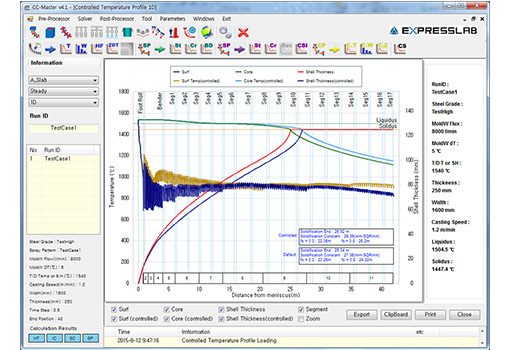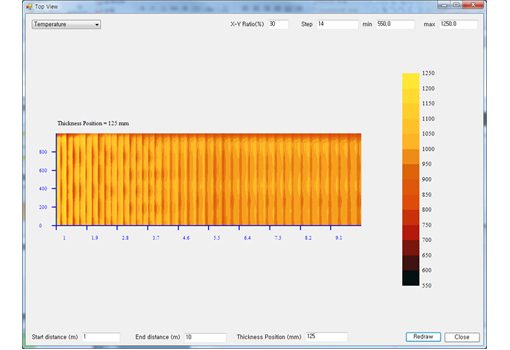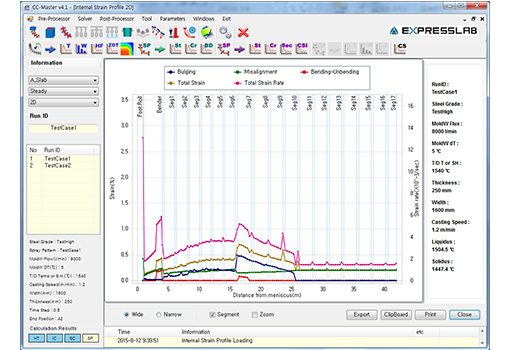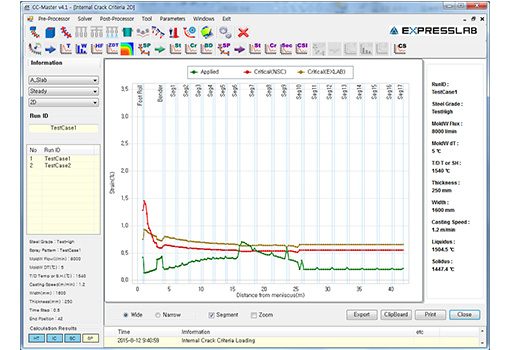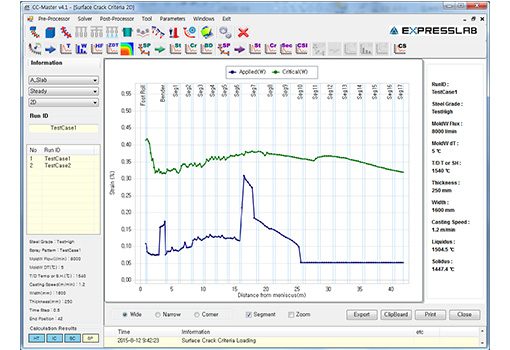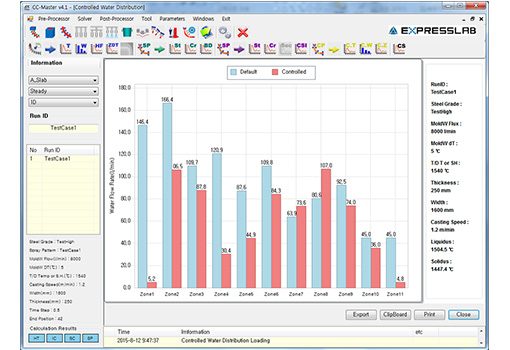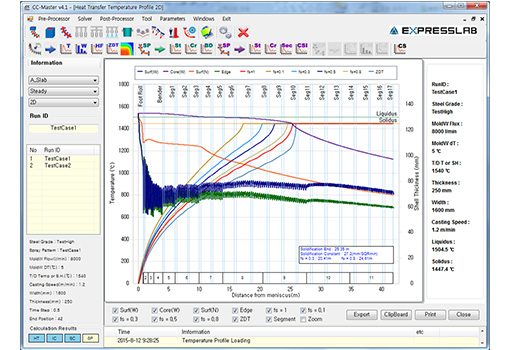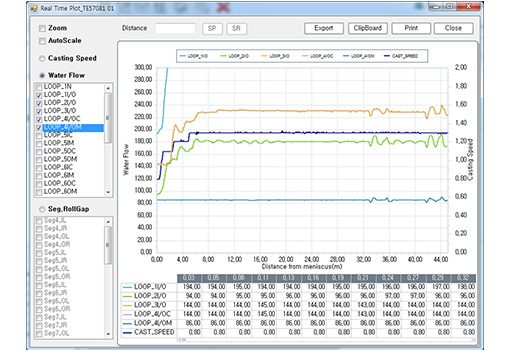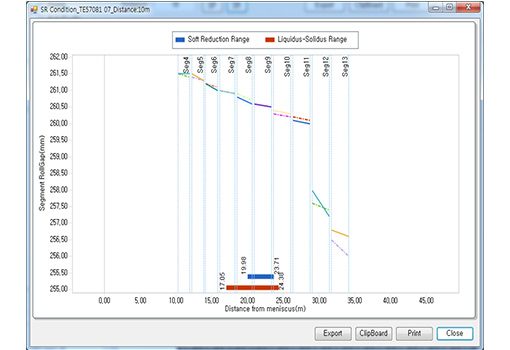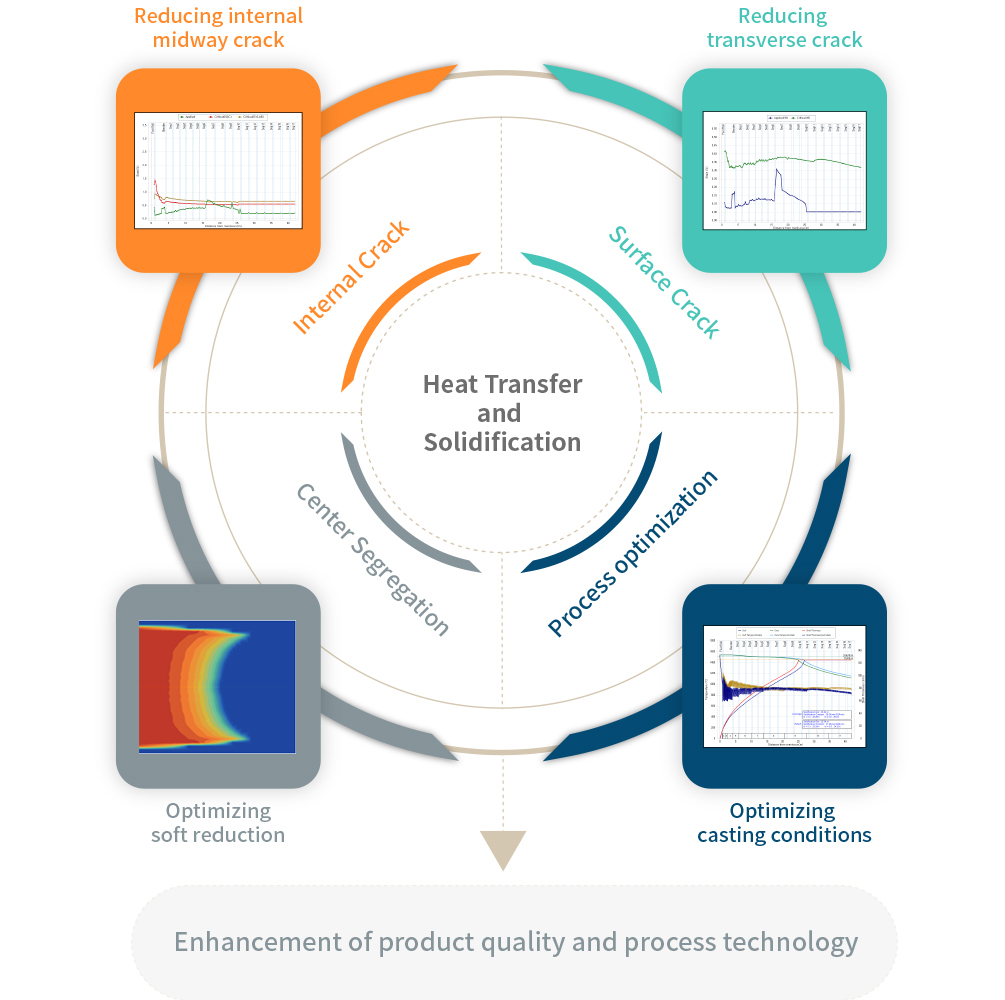Software for Continuous Casting
Professional Tool for Process Design, Process Optimization and Quality Estimation in Continuous Casting Strand
CC-MASTER is the professional tool developed for the optimization of continuous casting process.
Extensive material database based on reliable failure-limit analyses of strands enables realistic and accurate simulation of continuous-casting process and defect evaluation in strands. Its flexible and powerful graphical user interface makes preparation of input data and examination of result data easy to accomplish.
Easy-to-Use / Competitiveness / User-friendly environment
Heat Transfer Module
Heat Transfer Module in CC-MASTER enables to predict the temperature/solidification behaviors and this works in coordination with other modules.
Accurate and Fast PredictionLinked with Extensive Material Database
Flexible Geometry / 2D Dimension
Easy-to-Tune
Internal Crack Module
Internal Crack Module enables to predict and suppress internal cracking during continuous casting. This work is very important in optimization of operation process and segment design such as roll geometry.
Calculation of Applied Strain and Critical Strain at Solidification InterfaceReliable Critical Strain Model
Roll Pitch Design to Prevent Internal Crack
Easy-to-Tune based on Field Experiences
Surface Crack Module
Evaluation of critical strain(depending on steel composition and temperature profile) at strand surface and its comparison with the applied strain at surface enables for users to judge whether the given surface temperature profile is proper to prevent surface cracking.
Coupled with Heat Transfer ModuleQuantitative Calculation to Prevent Surface Crack
2ndary Cooling Optimization
Calculation of Applied Strain and Critical Strain at Strand Surface
Water Flux Calculation Module
CC-MASTER offers a automatic calculation of the secondary-cooling pattern once users set the target temperatures within the cooling zones based upon the results from the Surface Cracking and Internal Cracking Modules simulated for preventing cracking.
Calculating water flow rate based on target temperature of each cooling zoneIterative method for finding water flow rate
Flexible temperature tolerance defined by user
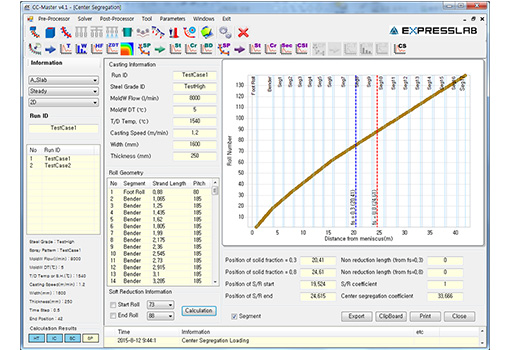
Center-Segregation Module
CC-MASTER includes the model developed based on phenomenological equations composed of several parameters affecting central segregation.
Phenomenological Model for Practical UseStatistical Fitting to Experimentally Determined Segregation Index
Quantitative Estimation of Segregation
Evaluating degree of correspondence between soft-reduction range and solidification completion
Real Condition Module
Real Condition Module is for the unsteady real casting, combining the heat transfer module, internal crack module and surface crack module with real casting data. And off-line monitoring of casting parameters is included.
Using real casting data for unsteady casting analysisFinding a soft reduction range using roll gap data
Off-line monitoring of casting conditions
Advanced simulating
Software for Continuous Casting
Professional Tool for Process Design, Process Optimization and Quality Estimation in Continuous Casting Strand
CC-MASTER is the professional tool developed for the optimization of continuous casting process.
Extensive material database based on reliable failure-limit analyses of strands enables realistic and accurate simulation of continuous-casting process and defect evaluation in strands. Its flexible and powerful graphical user interface makes preparation of input data and examination of result data easy to accomplish.
Easy-to-Use / Competitiveness / User-friendly environment


Heat Transfer Module
Heat Transfer Module in CC-MASTER enables to predict the temperature/solidification behaviors and this works in coordination with other modules.
Accurate and Fast PredictionLinked with Extensive Material Database
Flexible Geometry / 2D Dimension
Easy-to-Tune

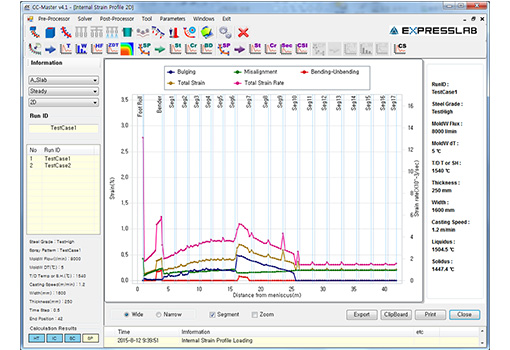
Internal Crack Module
Internal Crack Module enables to predict and suppress internal cracking during continuous casting. This work is very important in optimization of operation process and segment design such as roll geometry.
Calculation of Applied Strain and Critical Strain at Solidification InterfaceReliable Critical Strain Model
Roll Pitch Design to Prevent Internal Crack
Easy-to-Tune based on Field Experiences
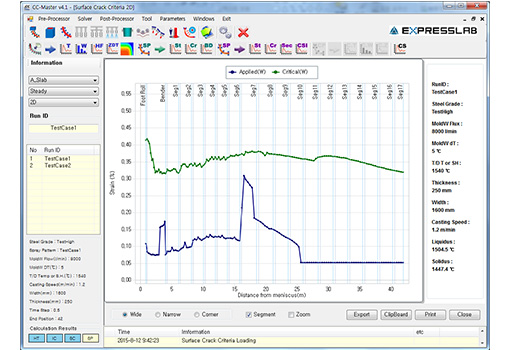
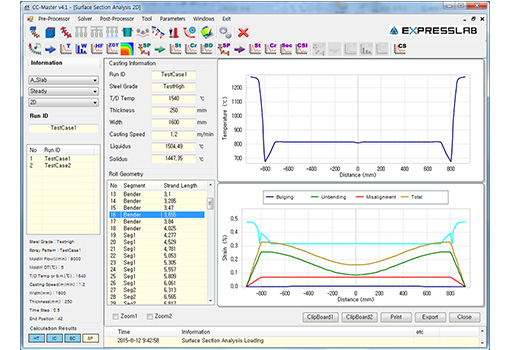
Surface Crack Module
Evaluation of critical strain(depending on steel composition and temperature profile) at strand surface and its comparison with the applied strain at surface enables for users to judge whether the given surface temperature profile is proper to prevent surface cracking.
Coupled with Heat Transfer ModuleQuantitative Calculation to Prevent Surface Crack
2ndary Cooling Optimization
Calculation of Applied Strain and Critical Strain at Strand Surface

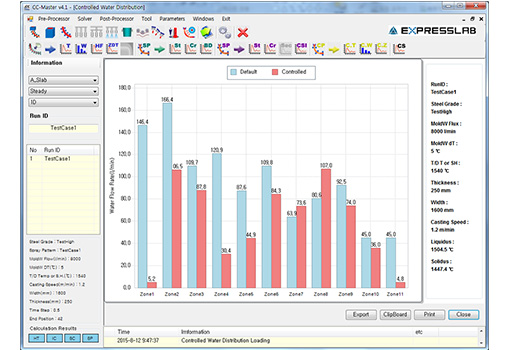
Water Flux Calculation Module
CC-MASTER offers a automatic calculation of the secondary-cooling pattern once users set the target temperatures within the cooling zones based upon the results from the Surface Cracking and Internal Cracking Modules simulated for preventing cracking.
Calculating water flow rate based on target temperature of each cooling zoneIterative method for finding water flow rate
Flexible temperature tolerance defined by user

Center-Segregation Module
CC-MASTER includes the model developed based on phenomenological equations composed of several parameters affecting central segregation.
Phenomenological Model for Practical UseStatistical Fitting to Experimentally Determined Segregation Index
Quantitative Estimation of Segregation
Evaluating degree of correspondence between soft-reduction range and solidification completion
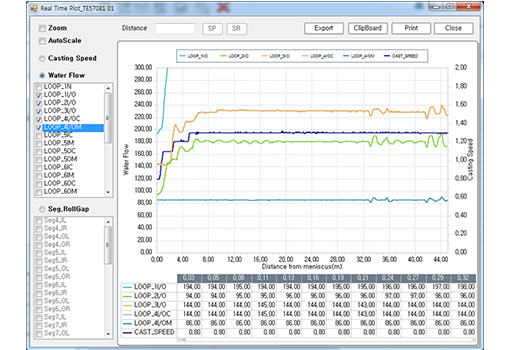
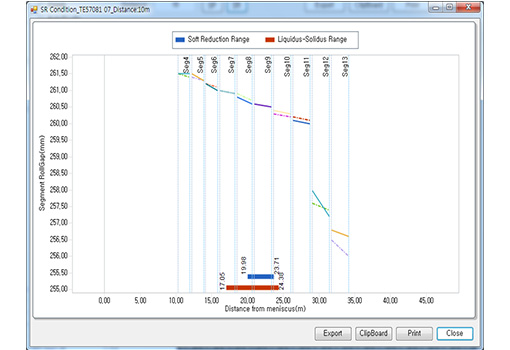
Real Condition Module
Real Condition Module is for the unsteady real casting, combining the heat transfer module, internal crack module and surface crack module with real casting data. And off-line monitoring of casting parameters is included.
Using real casting data for unsteady casting analysisFinding a soft reduction range using roll gap data
Off-line monitoring of casting conditions

